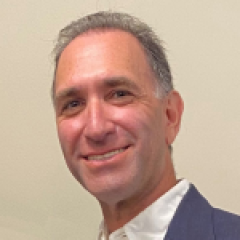The Answer Sheet: No, Great Schools Can’t Close Achievement Gaps All By Themselves
The basic premise underlying school reform today is that great schools can perform wonders, lifting students out of poverty and closing achievement gaps. They can’t. Research and practice prove that schools can’t do it alone in any systemic way, though policymakers continue to pretend that they can. Here is a new infographic about the issues involved, with an explainer, by Kevin Welner, a professor at the University of Colorado Boulder’s School of Education who specializes in educational policy and law. He is director of the National Education Policy Center at UC Boulder, which produces high-quality peer-reviewed research to inform education policy. The NEPC produced the infographic, below, with the non-profit Schott Foundation for Public Education, which works to improve public policy to achieve equity and opportunity in education and child care.
By Kevin Welner
Opportunity gaps drive achievement gaps. Yet U.S. policies proceed as if achievement can be boosted without corresponding investments in opportunities.
These gaps arise from inequities inside of schools as well as outside of schools. In fact, outside-school factors appear to account for most of the measured variance in achievement among different groups.
Yet U.S. policies proceed as if these gaps mainly arise from schools and should be closed by school-centric policies.
In either case, whether a given opportunity gap arises outside of schools or inside of schools, the problems to be addressed are invariably serious and engrained, and the solutions must be serious and sustained.
Yet U.S. policies proceed as if superficial, quick fixes are all that’s needed.
Through a collaboration between the Schott Foundation and the National Education Policy Center, these ideas are tackled in a new infographic, called “Lifting All Children Up,” which you can see below.
The first panel represents the current situation, where individual children and educators are given the responsibility of somehow overcoming the inequities inside and outside of school. Some will indeed beat the odds; most won’t.
The second panel represents the ideal of Horace Mann—that we can trust schools to be the “great equalizer,” to provide such rich opportunities that they make up for larger societal inequalities. This “school-centric” approach calls on us to make the sort of serious and sustained investment in school resources that has never been attempted in the United States, particularly for the benefit of communities of concentrated poverty.
The third and final panel represents the more sensible, efficient and humane approach, which is to attack the cruelty of concentrated poverty directly. It is wrongheaded to weigh our children down with obstacle after obstacle and then turn to our schools to overcome those burdens.
When schools use best practices that help to close opportunity gaps, we should applaud – and that’s why NEPC celebrates Schools of Opportunity, those schools that seek to close opportunity gaps through practices “that build on students’ strengths” — not by inundating them with tests and obsessing on the scores.
But great schools are not enough; schools cannot do it alone.
The overall opportunity gap is the result of a compilation – the cumulative effect of many separate gaps. When the time comes that we make a serious, sustained effort to close those gaps, we’ll lift all children up. We’ll see children succeeding at new levels, as high as their opportunities can take them.
[Project to recognize ‘high schools of opportunity’ for all students goes national]

This blog post has been shared by permission from the author.
Readers wishing to comment on the content are encouraged to do so via the link to the original post.
Find the original post here:
The views expressed by the blogger are not necessarily those of NEPC.

